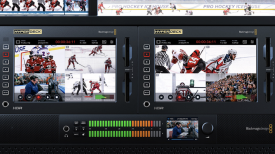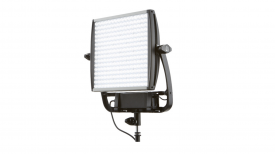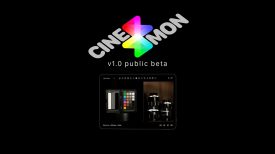
The Fotodiox Pro Factor Jupiter24 VR-4500ASVL Bi-color dimmable studio light is quite an interesting light. With its large circular design it’s almost best to think of it as a giant ring light without the hole in the middle.
The light is designed primarily as a studio light, but it’s certainly versatile enough to be used out in the field as well. The VR-4500ASVL doesn’t require any diffusion as it’s already built into the light. The downside of this of course is that the light is always going to have a limited output. The positive side is that you don’t need to carry around a softbox or diffusion to turn it into a nice soft source.
Build quality
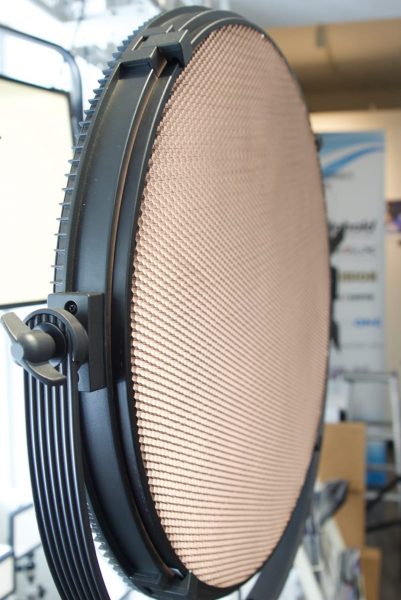
You may well associate Fotodiox with making cheap products, and therefore assume that the build quality isn’t going to be that great. To be honest I had this same misconception before I actually got to see and use the light. It is solidly constructed and this is quite evident when you go to pick it up.
This isn’t a lightweight light, it weighs in at 9.9 kg (21.8 lbs). This weight definitely makes it more suitable for use in a studio environment, but it does have the ability to be used out on location. The controls, dials, switches and yoke adjustment lock off are all solidly made.
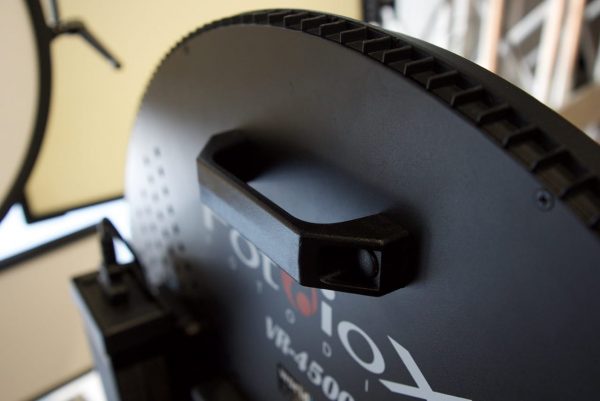
The Jupiter24 also has a nice big handle on the back of it which is handy for tilting the light.
Powering options
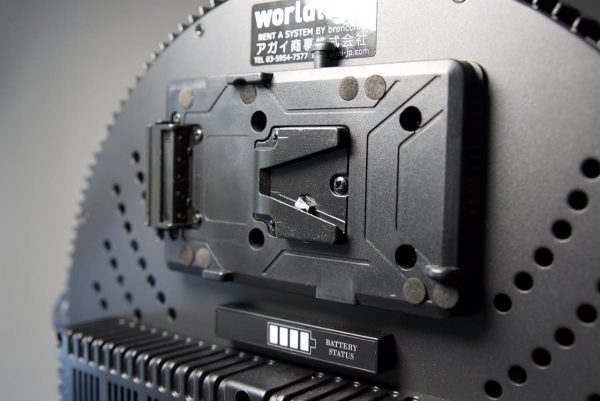
Despite being built for studios the Jupiter24 has a few different powering options. The light draws 200W of power and can be run off any DC 24-30V source. This means that not only can you run it off mains power, but you can also use a V-lock battery to operate it out on location. According to Fotodiox the light can be run for up to 1.3hrs off a 130Wh V-mount battery. I didn’t have a V-lock battery with me when I was testing and using the light so I was unable to verify this.
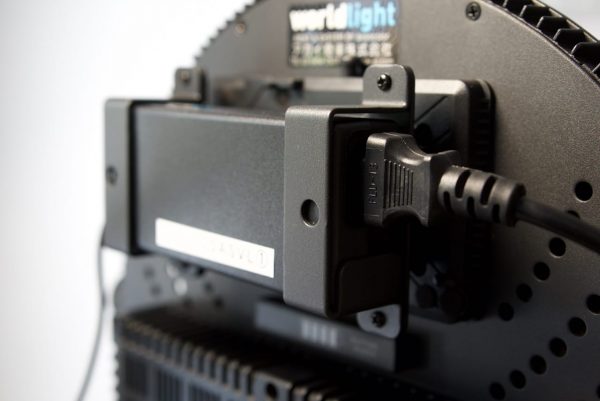
A nice touch is that the power supply for the light mounts onto the V-lock plate.
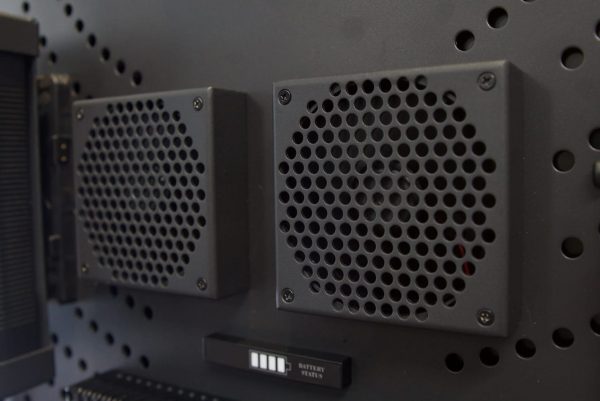
The light does use a built in fan and if you have it switched off the light will only operate at 80% output. It’s quite a large fan but I found that it runs fairly silently and shouldn’t be a concern unless you are working in very quiet conditions.
Features and controls
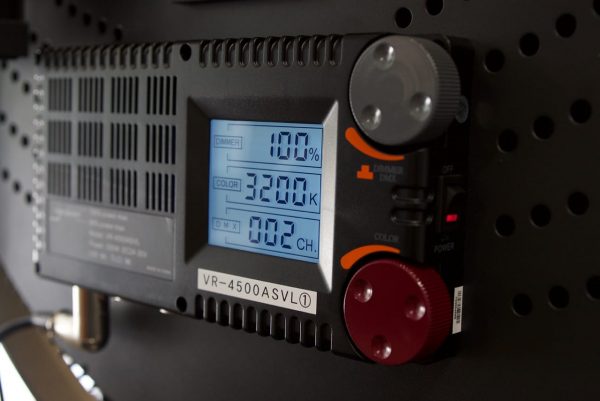
The Jupiter24 has basic controls that allow you to change the kelvin temperature from 3200K up to 5600K, and the brightness level from 0-100%. The controls are large and easy to adjust.
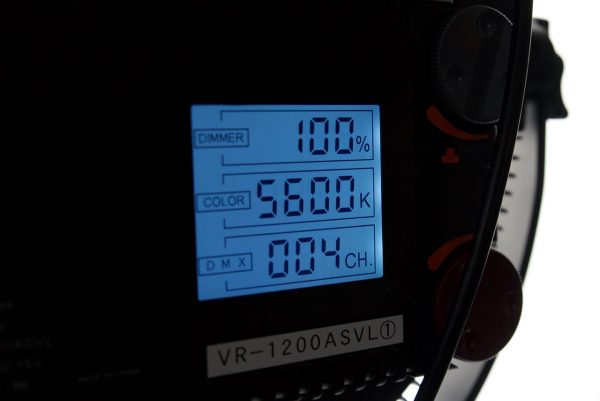
There is a really nice large LCD display that shows you your kelvin temperature, output level, and DMX channel. There are also DMX in and out ports.
How does it perform?
I used the Sekonic C700 to test both the lights output and colour rendering scores. All readings were taken at a distance of one metre in a controlled environment.
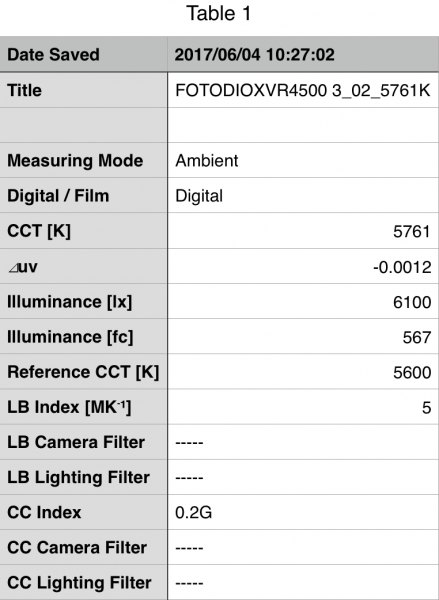
Above you can see that the light recorded an output of 6100lx when set at 5600K. The kelvin temperature reading was 5761K and the light had a ⊿uv (the value to show how much this light is away from being an ideal light source (black body radiation = incandescent lamp) score of -0.0012. While these figures were pretty good, an output of just 6100lx from a light this size is not overly impressive.
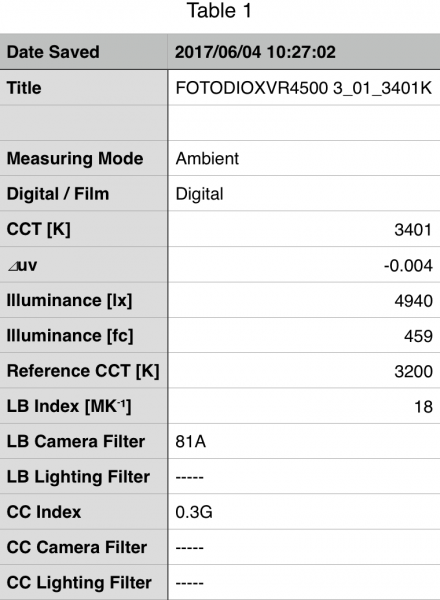
Above you can see that the light recorded an output of 4940lx when set at 3200K. The kelvin temperature reading was 3401K and the light had a ⊿uv (the value to show how much this light is away from being an ideal light source (black body radiation = incandescent lamp) score of -0.004. Again the output of this light was quite low given its large size.
Colour rendition
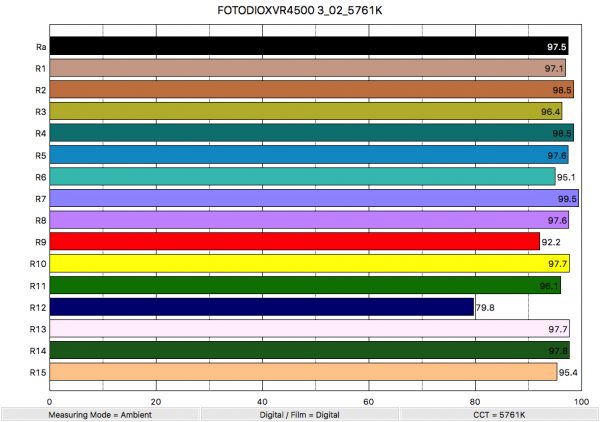
While the light may not have a great output, it is extremely colour accurate. Above you can see that when the VR4500 was set at 5600K it recorded an average CRI (R1-R8) of 97.5, and an extended CRI (R1-R15) of 95.8. For the all important skin tone rendition it registered 92.2 for R9 (red), 97.7 for R13 (closest to caucasian skin tones), and 95.4 for R15 (closest to asian skin tones). These figures were very impressive and put the Fotodiox VR4500 right up near some of the best LED lights I have tested at 5600K. Fotodiox quote a CRI of 96, and I found this light certainly meets that figure.
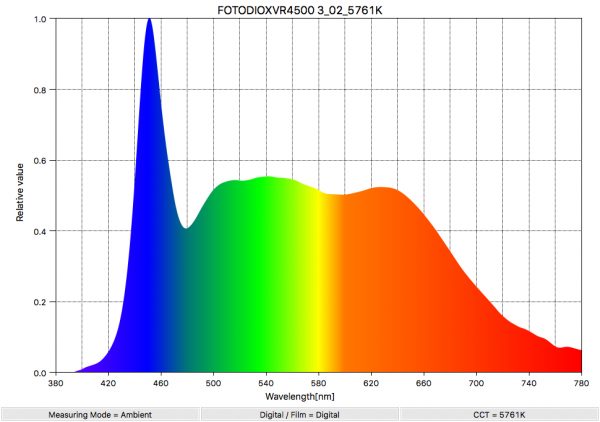
To further emphasise how good those scores are at 5600K, have a look at the spectral distribution of the VR 4500 above.
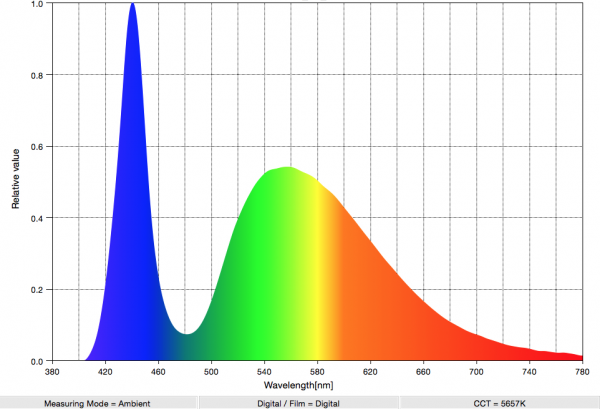
A lot of LED lights tend to have big gaps when you look at their spectral distribution. To illustrate my point have a look at the results above from a light made by a leading LED light manufacturer.
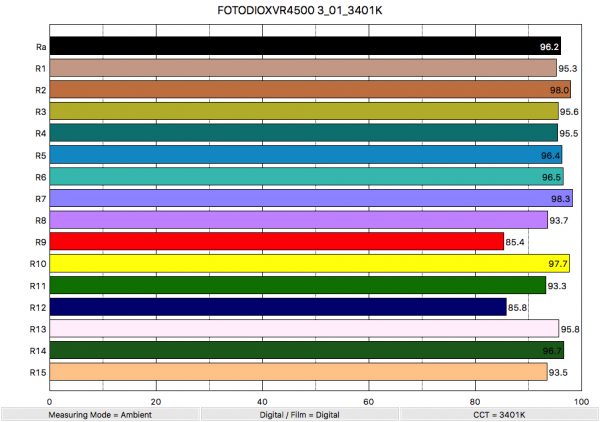
Above you can see that when the VR4500 was set at 3200K it recorded an average CRI (R1-R8) of 96.2, and an extended CRI (R1-R15) of 94.5. For the all important skin tone rendition it registered 85.4 for R9 (red), 95.8 for R13 (closest to caucasian skin tones), and 93.5 for R15 (closest to asian skin tones). In something of a surprise the VR4500 didn’t perform as well at 3200K as it did at 5600K. Usually LED lights perform better at 3200K than they do at 5600K when it comes to colour rendering. Despite the lower scores, the VR4500 still managed to produce good results at 3200K.
Accessories
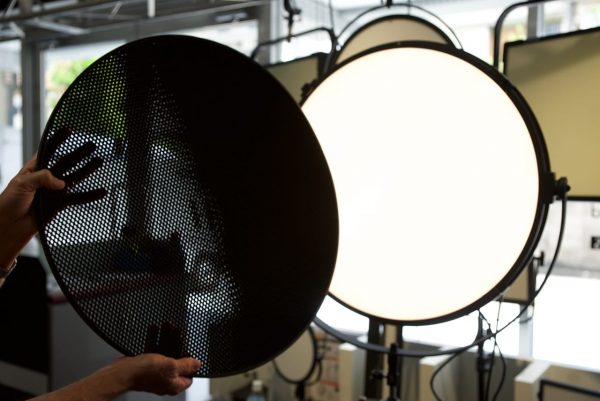
Fotodiox make a really nice 50° honeycomb grid and also a selection of creative shape masks. The 50° honeycomb grid clips onto the front of the light and does a really good job of concentrating the lights output and avoiding excessive light spill.
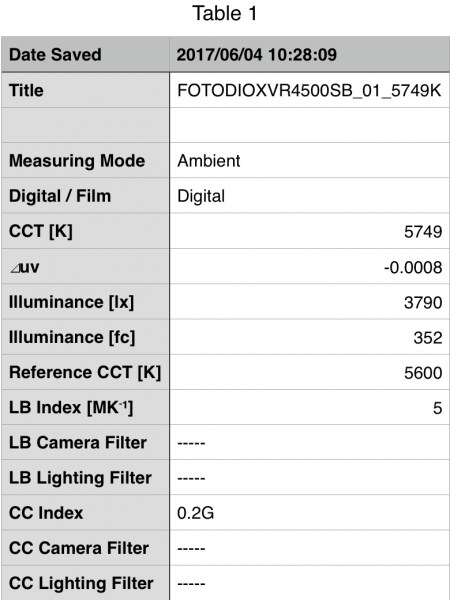
Above you can see the output of the light at 5600K when used with the 50° honeycomb grid. The light recorded an output of 3790lx, which is quite a lot less than the 6100lx it outputs when not using the honeycomb grid.
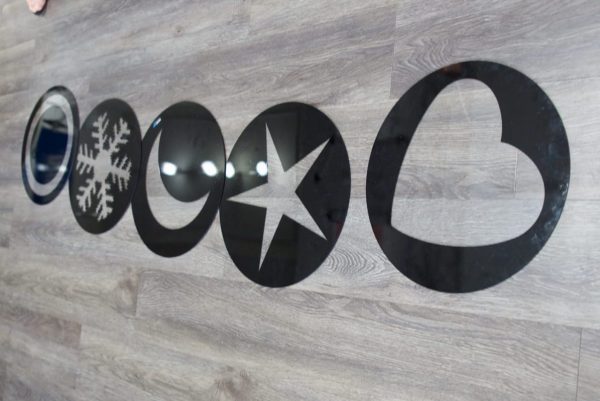
The creative shape masks are a bit of fun, but I’m not sure how many times I would actually use them. You can create some interesting effects, but they are probably more suited to photography work than video.
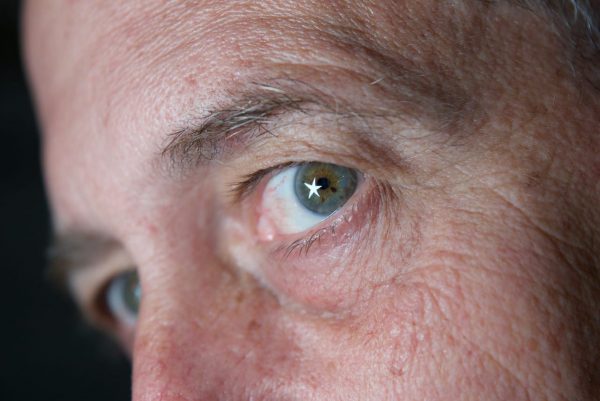
Above you can see what the star shape looks like when added to the front of the light.
Quality of light
Not only does the Jupiter24 VR-4500ASVL have really good photometric scores, it also produces a really nice soft lighting source. We used the fixture with the 50° honeycomb grid as the main key light for our shoot showcasing the Fujinon MK zooms.
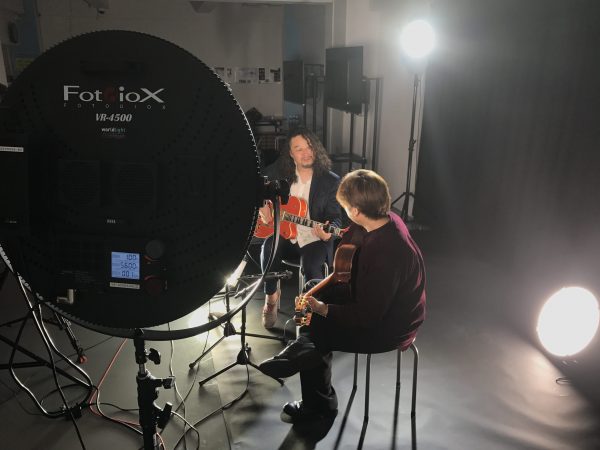
In this situation it worked really well and provided a soft source with not a lot of spill. We also used a smaller Jupiter12 VR-1200ASVL as one of the backlights and had it mounted on the floor.
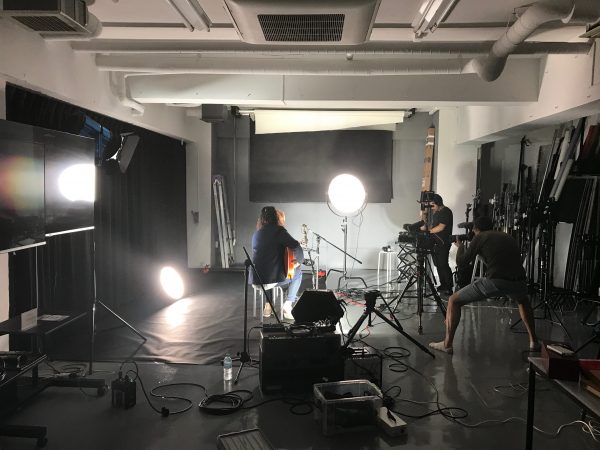
Fotodiox Jupiter24 VR-4500ASVL: Conclusion
The Fotodiox Jupiter24 VR-4500ASVL pleasantly surprised me. I wasn’t quite sure what to expect when I first started testing the light, but it quickly won me over.
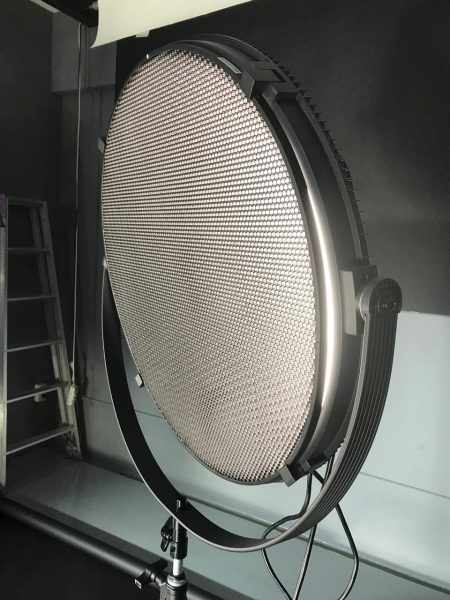
The light is very colour accurate and produces a beautiful soft source with a nice gradual fall off. For close up beauty or portrait shots it gives you great results. Being so large and round, the light is nice for putting a circular glow, similar to the effect you get from a ring light, in peoples’ eyes. The only negative aspect of the light for me is the output. For a light this size I wish it was a bit more powerful. While you could take it out on location the physical size and weight of the light make it a little impractical, but at least it’s good to know it can be done.
For small production companies or people with their own studios, this light makes a lot of sense depending on what you are primarily shooting. If you are shooting people in front of backdrops or doing beauty shots of products the Jupiter24 VR-4500ASVL looks to be a good solution. At $1,995 US it also represents pretty good value for money. In Japan you can buy it for 194,200 JPY plus tax.
Thanks to Agai Trading for providing the light and studio space for this review.



